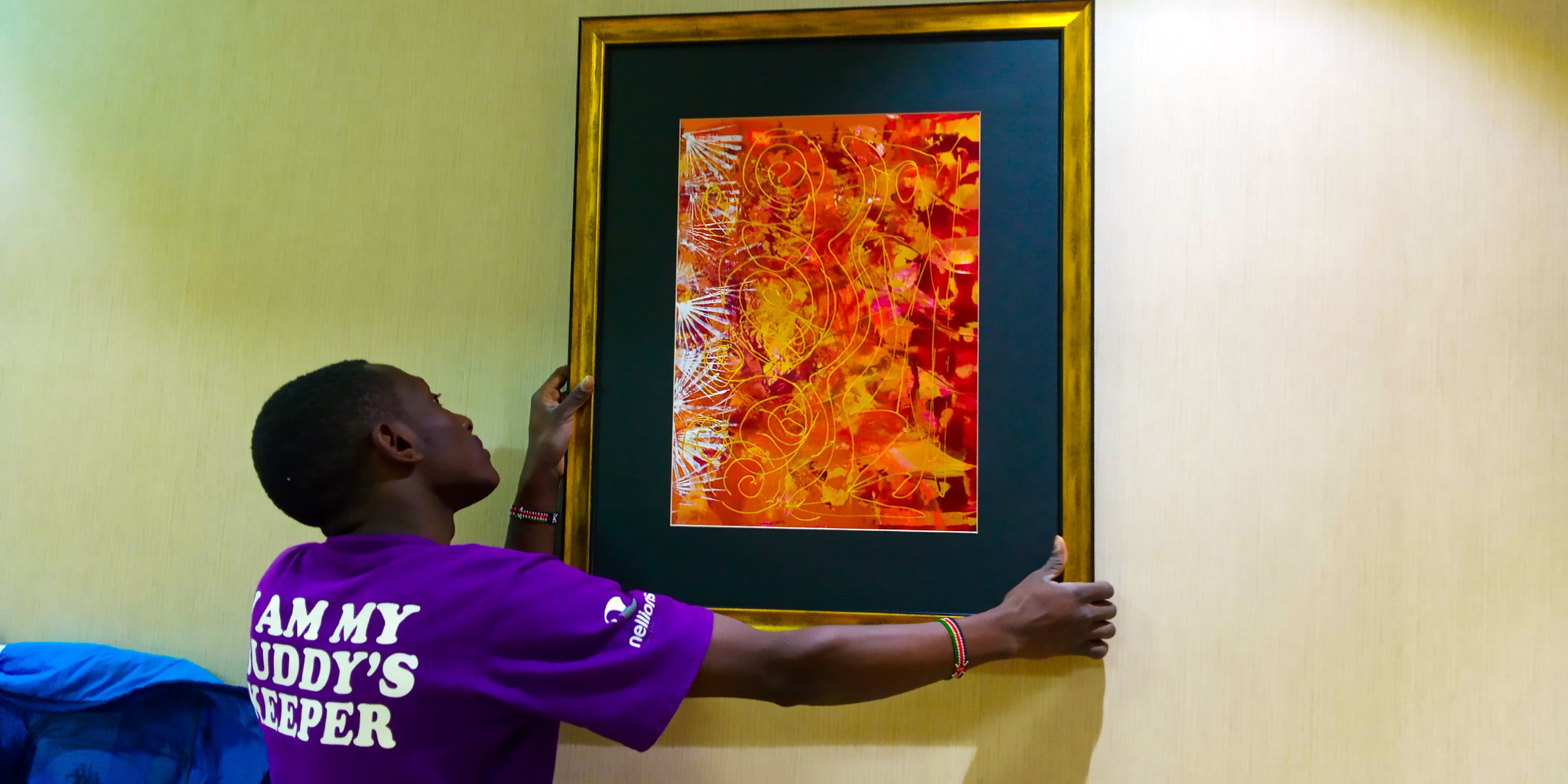Moving fine art requires special handling due to its delicate and often priceless nature. Needless to say, a fine art move requires diligent planning ahead of time and precise execution.
If you engage professional movers for the move, the first step, as with all moves, involves assessing the condition of the art. All pre existing damage is noted, confirmed by the client, and then the packing can begin.
Packing
First wrap your art with glassine which is known for being air, water and grease resistant. This will protect it from blemishes caused by anything. Then, layer the fine art several times with bubble wrap and secure it with packing tape. Wrap the bubble wrap twice in order to provide enough protective cushioning. When moving, the corners of framed art are particularly vulnerable to scratches and nicks. For this reason, it’s important to surround these parts with corner protectors, such as Styrofoam corner protectors or cardboard corner protectors.
Depending on the type of move, the art is then wrapped using moving blankets or placed in mirror boxes. If mirror boxes aren’t available, a moving crate can be fashioned using wood, or the art is wrapped with a mix of corrugated paper and a customized box. It provides the artwork with enough protection during transportation. The crates should only handle the art and not be mixed with anything else. While packing multiple arts in crates, make sure they are face to face or back to back. This helps prevent the front of one piece not to be damaged by the back of another piece. The video below, while showing the wrapping of a mirror, illustrates this process nicely:
While packing it in crates or proper boxes, fill the boxes with packing paper first, then place your wrapped art in. Afterwards, put more packing paper on top of the art and any other remaining space until the art is immovable before sealing it. Always remember to label the boxes or crates ‘fragile’ on all sides.
Pack fine art as the last item
Don’t make the mistake of loading the art into the moving vehicle first because then you will have to put other boxes on top of them. As stated earlier, fine art is very delicate hence it should be packed last. Strategically place the art work on top of the other boxes where you know it won’t be squashed or damaged by other items and nothing will fall on it.
Hanging the artwork
The process of displaying your artwork is fairly straightforward. First, you have to evaluate the size, weight and shape of the item to be hung, and the materials needed.
The tools you need will mostly be guided by the piece and the place it is to be hung. You’ll need a hammer, tape measure, pencil and nails to hang most pieces on drywall or a plastered wall. Heavier pieces require more materials such as picture-hangers, bigger nails, a stud-finder, or wall-plug anchors, screws that fit them, and a screwdriver. If you’re hanging on a tiled or glass surface, you’ll need good-quality, low-profile adhesive hooks rather than nails and screws, and if you’re hanging on brick, get some brick clamps.
The last part before hanging involves finding the right spot to hang it. The center of a framed piece of artwork should be 57 inches (~145cm) above the ground. This is the average human eye level, the measurement that art galleries and museums use when deciding where to hang art pieces. Mark the height using a pencil, then measure from both ends of the wall to find the middle of the wall, and mark this point too.
Now measure the distance from your midpoint to where the nail will go and mark it, allowing some room for slacking of the supporting wire of the art piece. If the piece is very heavy, first use a stud-finder to locate a stud and see if it’s in a logical position for your nail to go. If the position is weird, use an anchor and screw instead of a nail.
Finally, hammer the nail in and hang your piece. Balance it, and you’re good to go.
Moving fine art is an engaging and delicate process that required meticulous attention. This article guides on how to install most art pieces, but should you require to involve some experts in the process, Nellions is available to make your move happen smoothly and stress-free. We have the experience, manpower and materials required to move your art safely. If you’re passionate about art, rest assured that your pieces are in good hands.
Happy moving.











